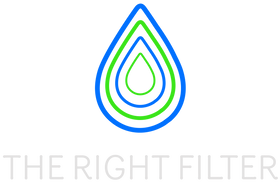Again with the plastic?? Okay this time, let’s focus on how we’re making it easier to recycle, break down, and even turn into something useful.
First up, a simple but brilliant innovation: labels that actually come off. A team from the Un iversity of Reading has developed a new polymer adhesive that sticks firmly to plastic bottles during normal use but breaks down when treated with alkaline solutions. This means labels can be easily removed during recycling, improving the quality of the recycled plastic.
Now, let’s talk about breaking down plastics entirely. A team at ETH Zurich has developed a light-triggered chemical process that breaks certain polymers back into their original monomers. This means plastics can be recycled more easily and cheaply, turning old plastic into new plastic without the hassle.
Here’s how it works: the polymer is placed in a dichlorobenzene solvent and exposed to violet light. No reagents or catalysts are needed—just heat above 90°C (about 194 Farenheit) and constant light. The result? A vat of monomers ready to be separated and reused.
The best part? The process was discovered by accident. The researchers found that dichlorobenzene, when exposed to light, produces chlorine radicals that break the polymer backbone. And once it starts, the reaction keeps going, like a runway train.
But what if we could skip the recycling step altogether and make plastic from scratch in a sustainable way? Enter *Cupriavidus necator*, a soil bacterium that’s been turning heads for decades. This little microbe can convert formic acid and CO2 into bioplastics, but there’s a catch: it’s not very efficient.
Researchers from Wageningen University and the Max Planck Institute decided to fix that. They designed a more direct biochemical pathway, allowing the bacterium to use formic acid without unnecessary detours. The result? A 15% to 20% increase in biomass yield with the same energy input. That extra efficiency could make the difference between a sustainable process and one that’s just too expensive to scale.
And then there’s *Clostridium thermocellum*, a thermophilic bacterium that’s been engineered to break down PET plastic with a 96.7% conversion rate. As part of a whole-cell biocatalyst, it turns PET into terephthalic acid (TPA), a key monomer for making new plastics.
The system is efficient, scalable, and environmentally friendly—exactly what we need to tackle the plastic pollution crisis. As the researchers note, this high-performance system could be a game-changer for achieving a circular economy.
So, what’s the takeaway? Plastic is a problem, but it’s also an opportunity. It’s not going to be easy, and it’s not going to happen overnight, but with every breakthrough, we’re one step closer to a cleaner, healthier, plastic free planet.
Articles Referenced
https://phys.org/news/2025-02-plastic-bottles-easier-recycle-degradable.html
https://phys.org/news/2025-02-triggered-polymers-monomers-easier-recycling.html
https://phys.org/news/2025-02-boosted-soil-bacterium-sustainable-bioplastic.html
https://phys.org/news/2025-02-thermophilic-bacterium-high-conversion-plastic.html
